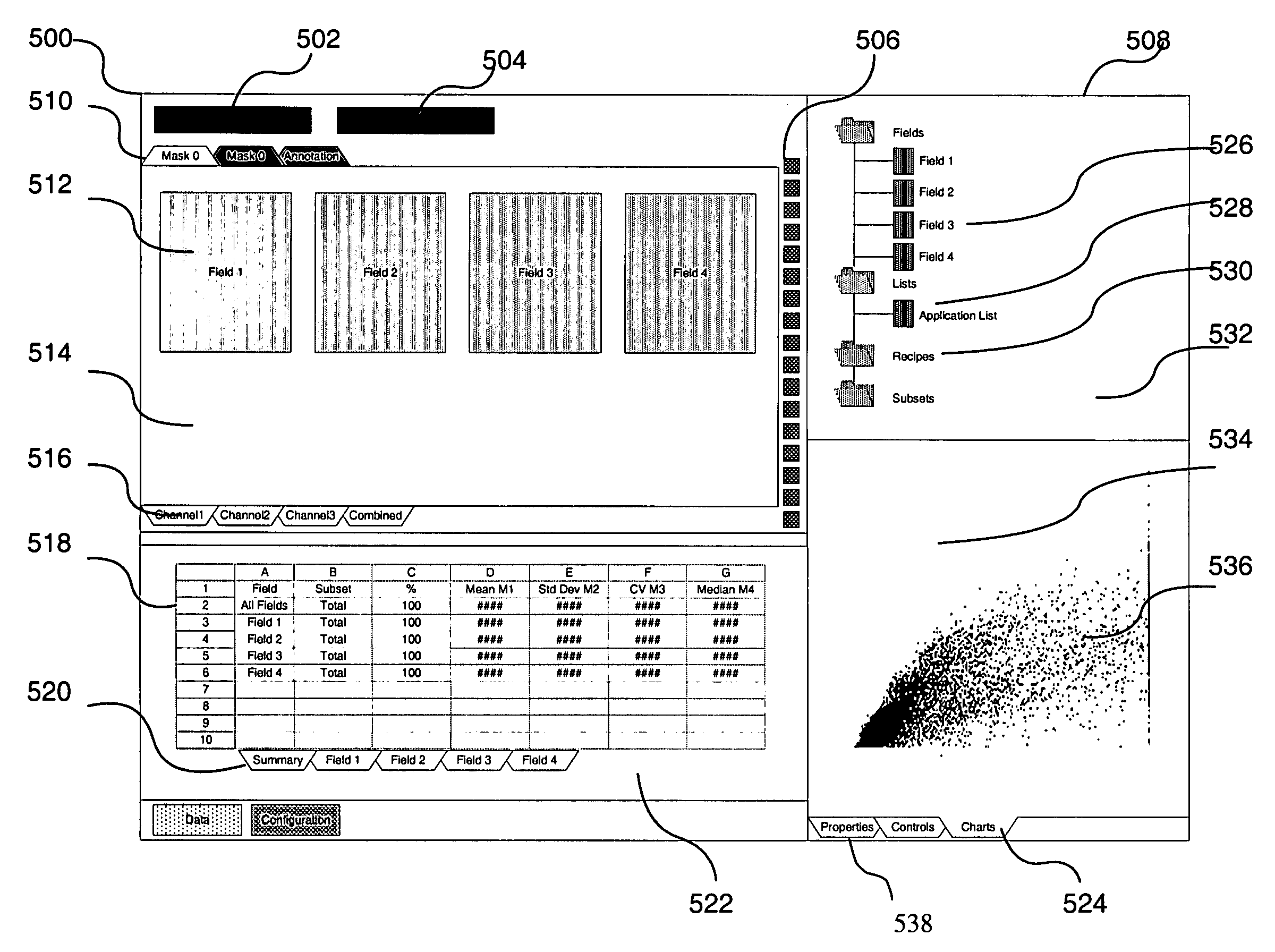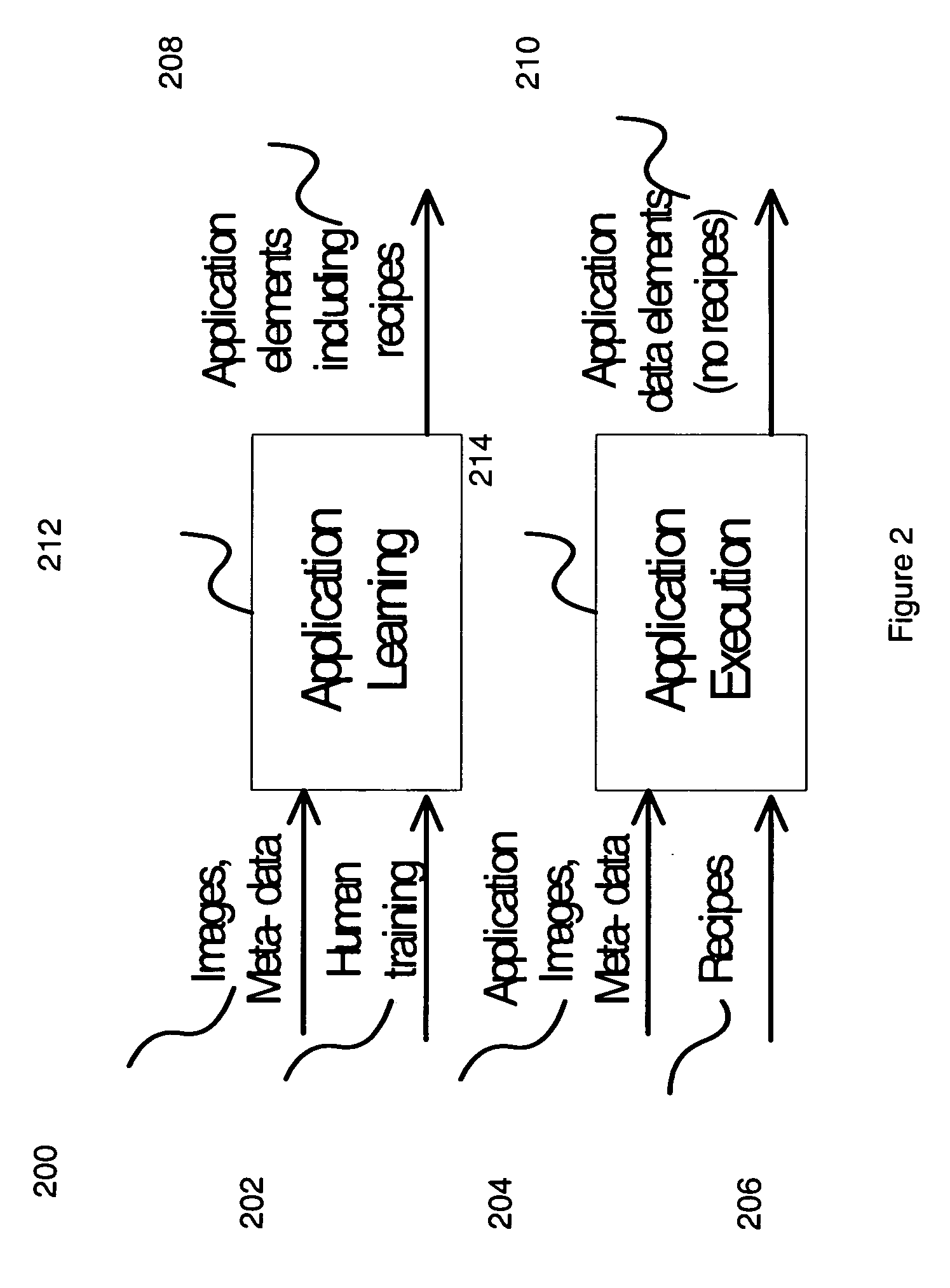Integrated human-computer interface for image recognition
a human-computer interface and image recognition technology, applied in image enhancement, image analysis, instruments, etc., can solve the problems of restricted to specific applications, generic, easy-to-use software for managing the complexity of image recognition applications, and prohibited the widespread adoption of image recognition software by end users, so as to improve efficiency and convenience, and ease of modification.
- Summary
- Abstract
- Description
- Claims
- Application Information
AI Technical Summary
Benefits of technology
Problems solved by technology
Method used
Image
Examples
Embodiment Construction
I. Application Scenario
[0028]Referring to FIG. 1, an application scenario of the Recognition Frame user interface for image recognition applications includes a computer monitor 100 that is connected to a computer 102. The computer is connected directly or indirectly to image sensor such as camera 104. The camera 104 transmits images to the computer 102 either directly through an attached wire or wireless link, or indirectly across a network 106, through the internet or via some other data transfer method. The camera 104 could be attached to a microscope, be embedded in piece of industrial manufacturing inspection equipment, a military platform, etc. Images can also be transferred to the computer from a data storage 108 connected directly to the computer 102, or indirectly across a network 106 or some other transfer method. The image recognition application images are transferred to the computer 102 for image recognition processing and user interaction through the interface using one...
PUM
 Login to View More
Login to View More Abstract
Description
Claims
Application Information
 Login to View More
Login to View More - R&D
- Intellectual Property
- Life Sciences
- Materials
- Tech Scout
- Unparalleled Data Quality
- Higher Quality Content
- 60% Fewer Hallucinations
Browse by: Latest US Patents, China's latest patents, Technical Efficacy Thesaurus, Application Domain, Technology Topic, Popular Technical Reports.
© 2025 PatSnap. All rights reserved.Legal|Privacy policy|Modern Slavery Act Transparency Statement|Sitemap|About US| Contact US: help@patsnap.com



